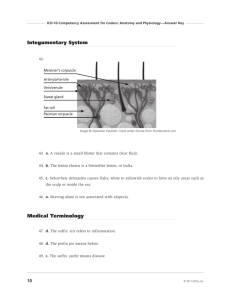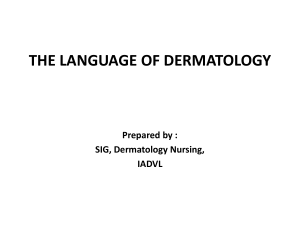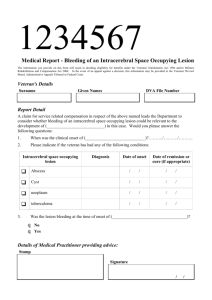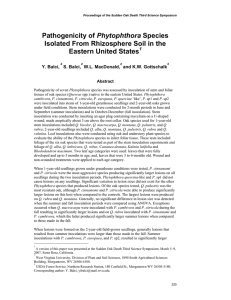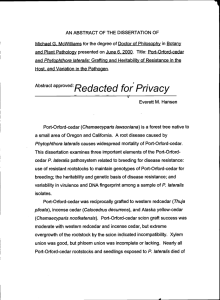Seasonal Trends in Response to Inoculation of Phytophthora ramorum 1
advertisement
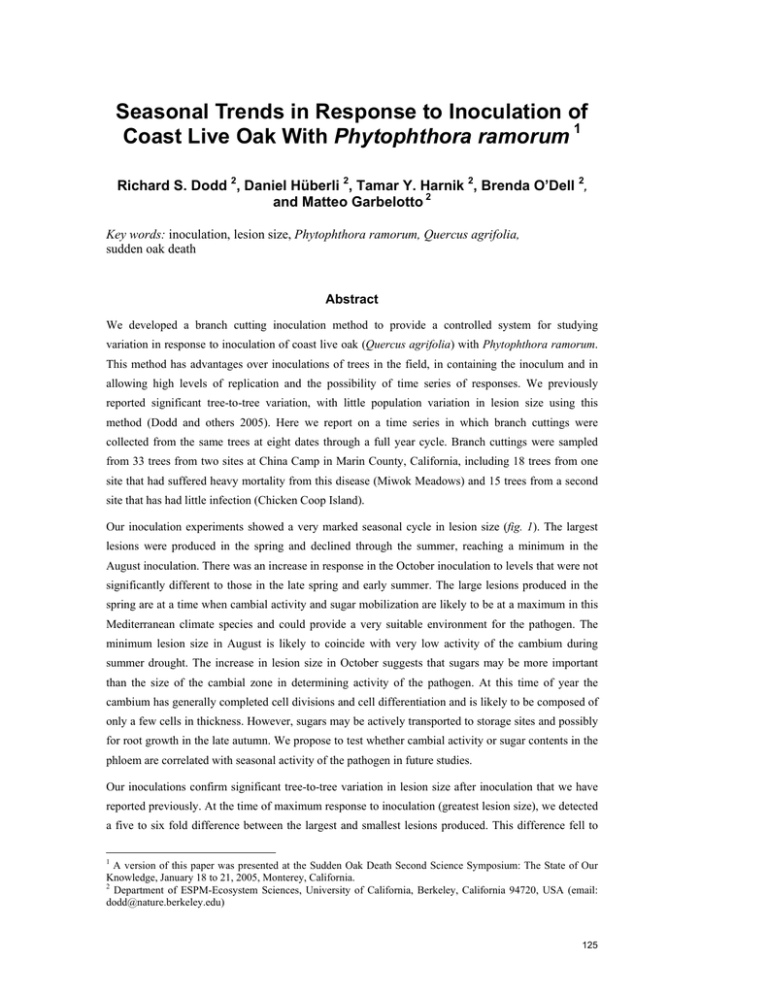
Seasonal Trends in Response to Inoculation of Coast Live Oak With Phytophthora ramorum 1 Richard S. Dodd 2, Daniel Hüberli 2, Tamar Y. Harnik 2, Brenda O’Dell 2, and Matteo Garbelotto 2 Key words: inoculation, lesion size, Phytophthora ramorum, Quercus agrifolia, sudden oak death Abstract We developed a branch cutting inoculation method to provide a controlled system for studying variation in response to inoculation of coast live oak (Quercus agrifolia) with Phytophthora ramorum. This method has advantages over inoculations of trees in the field, in containing the inoculum and in allowing high levels of replication and the possibility of time series of responses. We previously reported significant tree-to-tree variation, with little population variation in lesion size using this method (Dodd and others 2005). Here we report on a time series in which branch cuttings were collected from the same trees at eight dates through a full year cycle. Branch cuttings were sampled from 33 trees from two sites at China Camp in Marin County, California, including 18 trees from one site that had suffered heavy mortality from this disease (Miwok Meadows) and 15 trees from a second site that has had little infection (Chicken Coop Island). Our inoculation experiments showed a very marked seasonal cycle in lesion size (fig. 1). The largest lesions were produced in the spring and declined through the summer, reaching a minimum in the August inoculation. There was an increase in response in the October inoculation to levels that were not significantly different to those in the late spring and early summer. The large lesions produced in the spring are at a time when cambial activity and sugar mobilization are likely to be at a maximum in this Mediterranean climate species and could provide a very suitable environment for the pathogen. The minimum lesion size in August is likely to coincide with very low activity of the cambium during summer drought. The increase in lesion size in October suggests that sugars may be more important than the size of the cambial zone in determining activity of the pathogen. At this time of year the cambium has generally completed cell divisions and cell differentiation and is likely to be composed of only a few cells in thickness. However, sugars may be actively transported to storage sites and possibly for root growth in the late autumn. We propose to test whether cambial activity or sugar contents in the phloem are correlated with seasonal activity of the pathogen in future studies. Our inoculations confirm significant tree-to-tree variation in lesion size after inoculation that we have reported previously. At the time of maximum response to inoculation (greatest lesion size), we detected a five to six fold difference between the largest and smallest lesions produced. This difference fell to 1 A version of this paper was presented at the Sudden Oak Death Second Science Symposium: The State of Our Knowledge, January 18 to 21, 2005, Monterey, California. 2 Department of ESPM-Ecosystem Sciences, University of California, Berkeley, California 94720, USA (email: dodd@nature.berkeley.edu) 125 GENERAL TECHNICAL REPORT PSW-GTR-196 only two fold at times during the season when the lesions produced were small. Trees were ranked according to their lesion size at each of the harvest dates and rankings were compared across harvests. No trees ranked equally across all harvest dates. However, in comparing rankings for the two dates in which lesion sizes were maximum and differences among individuals were five to six fold, three individuals ranked in the five smallest lesion size class at both dates and three trees ranked in the five smallest lesion size class at each date. Interestingly, the three individuals with smallest lesions were all from Miwok Meadows, the site that had suffered heavy mortality before our sampling. The three individuals with largest lesion sizes were all from Chicken Coop Island, the site where prior infection had been light. The seasonal cycle in response to inoculation indicates that for comparative purposes, susceptibility tests should be carried out at the same time during the season to avoid confounding seasonal cycles in response. Late spring to late summer inoculations are likely to show the least seasonal variation in response, but because of relatively small lesions, are likely to provide poor levels of detection of differences among individuals. Lesion size varied significantly among individuals within a population, providing support to our earlier report of probable variation among individuals of coast live oak in response to infection with P. ramorum. 126 Proceedings of the sudden oak death second science symposium: the state of our knowledge 45 Mean lesion size (mm) 40 35 30 25 20 15 10 5 0 Apr- May- Jun- Jul- Aug- Sep- Oct- Nov- Dec- Jan- Feb- Mar03 03 03 03 03 03 03 03 03 04 04 04 Figure 1— Mean length of lesion on coast live oak cuttings after two weeks incubation following inoculation with Phytophthora ramorum. Vertical bars are 95% confidence intervals about the mean. References Dodd, R.S.; Hüberli, D.; Douhovnikoff, V.; Harnik, T.Y.; Afzal-Rafii, Z.; and Garbelotto, M. 2005. Is variation in susceptibility to Phytophthora ramorum correlated with population genetic structure in coast live oak (Quercus agrifolia Née)? New Phytologist. 165: 203-214. 127


